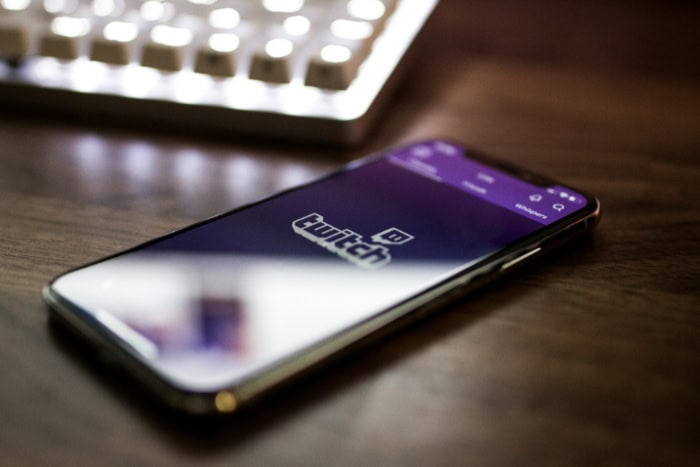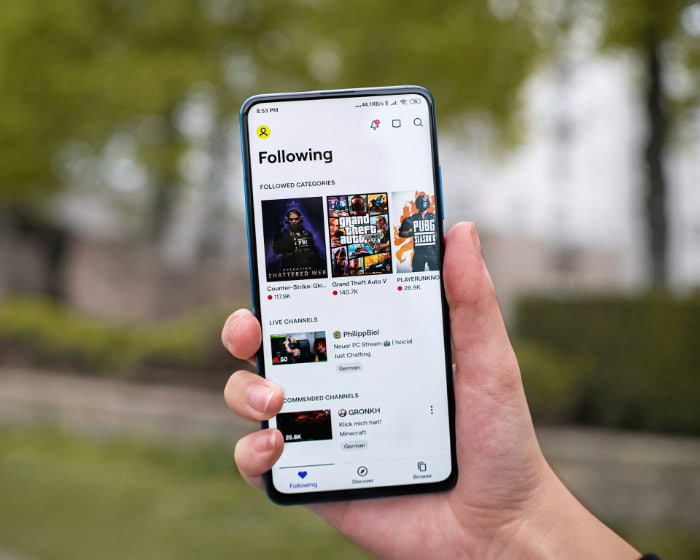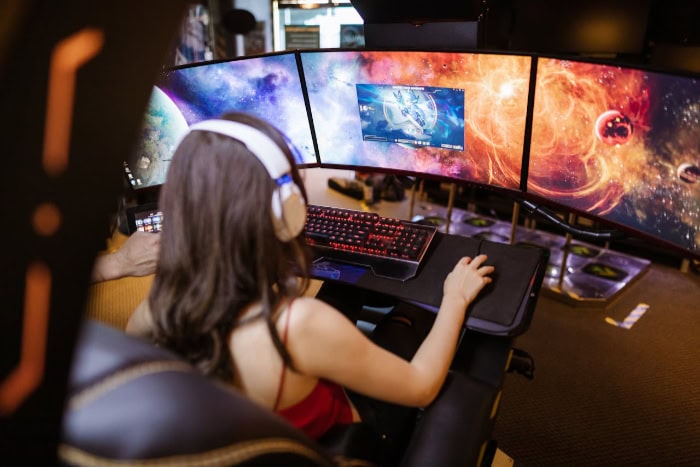Twitch vs. YouTube: What Streamers Need to Know

The world of live streaming has captivated audiences worldwide, turning everyday people into internet sensations and redefining entertainment. At the forefront of this digital revolution stand two titans: Twitch and YouTube.
These platforms have become virtual stages where creators showcase their talents, build communities, and even make a living. Twitch, born from the gaming world, has evolved into a bustling hub of real-time interaction.
YouTube, already a video powerhouse, has expanded its reach into the live streaming arena. As these platforms vie for supremacy, they offer distinct advantages and challenges for both creators and viewers.
Platform Overview and Audience
The streaming landscape is dominated by two major players: Twitch and YouTube. These platforms have carved out distinct niches in the live content market, attracting different types of creators and viewers.
To truly appreciate the strengths and weaknesses of each platform, it's essential to examine their core focus, audience demographics, and content variety.
Twitch: Gaming-Focused, Interactive Community
Twitch began as a platform dedicated to gaming content and has maintained this focus throughout its growth. The site's design and features cater specifically to gamers and gaming enthusiasts.
Streamers on Twitch primarily broadcast live gameplay, esports tournaments, and gaming-related talk shows. However, the platform has expanded to include creative content, music performances, and “Just Chatting” streams.
The interactive nature of Twitch sets it apart from other streaming platforms. Viewers can engage with streamers in real-time through chat, emotes, and channel-specific features like polls and predictions.
This high level of interaction fosters a sense of community and belonging among viewers, often leading to dedicated fan bases for popular streamers.
Twitch's audience skews younger, with a significant portion of users falling between the ages of 25 and 34. The platform also has a predominantly male user base, although efforts have been made to diversify and attract more female streamers and viewers.
YouTube: Diverse Content, Broader Audience Reach
YouTube, originally a video-sharing platform, has successfully integrated live streaming into its vast ecosystem of content. Unlike Twitch, YouTube's streaming offerings cover a wide range of topics beyond gaming.
Users can find live streams on subjects ranging from educational lectures and cooking shows to music concerts and political commentary.
The platform's broad appeal translates to a more diverse audience demographic. YouTube attracts viewers of all ages, from children watching animated content to seniors tuning in for hobby-related streams.
This wide-ranging audience provides opportunities for niche content creators to find their specific viewer base.
YouTube's integration with its extensive library of on-demand videos also gives streamers the advantage of discoverability. Live streams can appear in search results alongside regular videos, potentially attracting viewers who weren't specifically looking for live content.
User Demographics Comparison
While both platforms attract a global audience, their user bases differ significantly. Twitch's audience is predominantly young adults, with a strong presence in North America and Europe.
The platform's gaming focus attracts tech-savvy users who are often early adopters of new technologies and trends.
YouTube's demographic spread is more evenly distributed across age groups and geographic regions. The platform's availability in numerous languages and its localized content contribute to its broad international appeal.
YouTube also tends to have a more balanced gender distribution compared to Twitch.
Content Variety and Specialization
Twitch excels in live gaming content, offering a deep dive into various gaming subcultures. From speedrunning niche retro games to broadcasting major esports events, Twitch provides a home for all types of gaming content.
The platform has also seen growth in IRL (In Real Life) streams, where creators broadcast their daily activities or special events.
YouTube's content variety is unparalleled. While gaming streams are popular, they represent just a fraction of the available content.
The platform hosts live streams of news broadcasts, sports events, music festivals, and even space launches. This diversity allows creators to experiment with different types of content and find their unique niche.
Both platforms have developed specialized features to support their content creators. Twitch offers tools like Raids and Hosts, which allow streamers to share audiences and build communities.
YouTube provides robust integration with its existing video platform, allowing streamers to easily convert live broadcasts into on-demand content.
Streaming Features and User Experience

The success of a streaming platform hinges on its technical capabilities and user-friendly interface. Both Twitch and YouTube have invested heavily in these areas, constantly refining their offerings to provide the best possible experience for streamers and viewers alike.
Stream Quality and Technical Specifications
Twitch and YouTube both offer high-quality streaming options, but their approaches differ slightly. Twitch supports streaming at up to 1080p resolution at 60 frames per second (fps) for all users. This capability is available to everyone on the platform, not just partners or affiliates. Twitch has also announced plans to introduce 1440p (2K) resolution for viewers of streamers using Enhanced Broadcasting in the future, starting in select regions.
The platform uses adaptive bitrate technology, which adjusts the stream quality based on the viewer's internet connection.
YouTube, leveraging its extensive video infrastructure, supports streaming at up to 4K resolution at 60 fps for all users. The platform also employs adaptive bitrate streaming, ensuring smooth playback across various devices and connection speeds.
YouTube's higher resolution cap can be particularly beneficial for content that requires fine detail, such as art streams or tech reviews.
Both platforms use modern video codecs to optimize stream quality and reduce bandwidth usage. Twitch primarily uses H.264 encoding, while YouTube has implemented more advanced codecs like VP9 and AV1 for improved efficiency.
User Interface for Streamers and Viewers
Twitch's user interface is designed with live interaction in mind. The stream takes center stage, with a prominent chat window to the right.
This layout emphasizes real-time communication between streamers and viewers. Twitch also features a customizable channel page where streamers can showcase their schedule, social media links, and other relevant information.
For streamers, Twitch offers a comprehensive dashboard with stream analytics, chat moderation tools, and customization options. The platform's Creator Dashboard provides easy access to stream settings, alerts, and community management features.
YouTube's streaming interface integrates seamlessly with its existing video platform. The stream appears in the familiar YouTube video player, with chat displayed to the right (on desktop) or below (on mobile).
This consistency can be advantageous for viewers already accustomed to YouTube's layout.
YouTube Studio serves as the control center for creators, offering detailed analytics, content management tools, and monetization options. The interface allows for easy switching between live streaming and VOD content management.
Mobile Streaming Capabilities
Mobile streaming has become increasingly popular, and both platforms have adapted to meet this demand. Twitch offers a dedicated mobile app for both iOS and Android devices.
The app allows users to stream directly from their smartphones, though with some limitations compared to desktop streaming. Viewers can watch streams, participate in chat, and manage their accounts through the mobile app.
YouTube's mobile streaming capabilities are integrated into the main YouTube app. This integration allows for a seamless transition between watching VODs and live streams.
YouTube's app also supports mobile streaming, enabling creators to go live directly from their smartphones with features like live chat, Super Chat, and real-time analytics.
Both platforms have optimized their mobile interfaces to provide a smooth viewing experience on smaller screens. However, some advanced features may be limited or unavailable on mobile devices.
VOD (Video on Demand) Management
The ability to convert live streams into on-demand content is crucial for many creators, allowing them to extend the lifespan of their content and reach a wider audience. Twitch and YouTube handle VODs differently, reflecting their distinct approaches to content.
Twitch automatically saves streams as VODs for a limited time (7 days for regular users, 14 days for affiliates, 60 days for partners, Prime users, and Turbo subscribers). Creators can choose to highlight specific parts of their streams or export entire broadcasts to create permanent VODs.
However, Twitch's VOD system is primarily designed to complement live content rather than serve as a standalone video platform.
YouTube excels in VOD management, leveraging its roots as a video-sharing platform. Live streams are automatically archived and can be edited, trimmed, and organized like any other YouTube video.
This integration allows creators to seamlessly blend their live and pre-recorded content, potentially increasing discoverability and viewer engagement.
YouTube also offers more extensive editing tools for VODs, including the ability to add end screens, cards, and annotations. These features can help creators drive engagement and cross-promote their content more effectively.
Monetization and Revenue Potential

For many content creators, streaming is not just a hobby but a potential source of income. Both Twitch and YouTube offer various monetization options, allowing streamers to turn their passion into a profession.
These platforms have developed sophisticated systems to help creators generate revenue through different channels.
Ad Revenue Models
Advertising forms a significant part of the revenue stream for streamers on both platforms, but the implementation differs between Twitch and YouTube.
Twitch's ad system allows partnered and affiliate streamers to run ads during their broadcasts. These can be pre-roll ads (shown when a viewer first joins a stream) or mid-roll ads (played during the stream).
Streamers have control over when and how often these ads are played, allowing them to integrate ad breaks into their content seamlessly. The revenue share for ads on Twitch typically favors the creator, with streamers receiving a larger portion of the ad revenue compared to the platform.
YouTube's ad system is more diverse, reflecting its roots as a video-sharing platform. Streamers can monetize their live streams through various ad formats, including pre-roll and mid-roll.
YouTube also offers non-intrusive options like banner ads and sponsored cards. The platform's sophisticated targeting algorithms aim to deliver relevant ads to viewers, potentially increasing engagement and revenue.
However, YouTube's revenue share for ads is generally lower than Twitch's, with the platform taking a larger cut.
Both platforms offer tools for creators to monitor their ad performance and adjust their strategies accordingly. This data-driven approach allows streamers to optimize their content and scheduling to maximize ad revenue.
Subscription and Membership Programs
Subscription models provide a more stable income source for streamers, encouraging viewer loyalty and community building.
Twitch's subscription system is tiered, offering viewers different levels of support for their favorite streamers. Subscribers receive perks such as ad-free viewing, exclusive emotes, and special chat privileges.
Twitch Prime, included with Amazon Prime subscriptions, allows users to subscribe to one channel for free each month, further expanding the potential subscriber base for streamers.
YouTube's equivalent is the Channel Membership program. Viewers can join a channel at different price points, receiving perks similar to Twitch subscriptions.
YouTube also offers Super Chat and Super Stickers, allowing viewers to pay to have their messages highlighted during live streams.
Both platforms split subscription revenue with creators, typically offering a higher percentage to more popular streamers. This incentivizes growth and rewards creators for building and maintaining large, engaged audiences.
Donation Systems and Virtual Currencies
Direct viewer support through donations is a crucial revenue stream for many streamers.
Twitch uses a system called “Bits,” a virtual currency that viewers can purchase and use to “cheer” for streamers. When a viewer uses Bits, the streamer receives a share of the revenue.
Twitch also allows for direct PayPal donations, giving viewers another option to support their favorite creators.
YouTube's donation system is primarily through Super Chat and Super Stickers, which allow viewers to pay to have their messages or stickers prominently displayed in the chat. The amount paid determines how long the message remains pinned and how visible it is.
Both platforms take a cut of these donations, but the majority goes to the creator. These systems not only provide financial support but also enhance viewer engagement, as donors often receive special recognition during streams.
Sponsorship Opportunities
Beyond platform-specific monetization, both Twitch and YouTube streamers can secure external sponsorships and brand deals.
Twitch offers an official sponsorship program called Bounty Board, which connects streamers with brands for sponsored streams. This system provides a structured way for creators to access sponsorship opportunities while ensuring compliance with platform guidelines.
YouTube doesn't have a centralized sponsorship program, but its massive reach makes it attractive to brands. Many YouTube streamers secure sponsorships independently, integrating sponsored content into their streams or creating dedicated sponsored videos.
Both platforms require disclosure of sponsored content to maintain transparency with viewers. The potential for sponsorships often grows with a streamer's audience size and engagement levels, making it a significant revenue source for top creators.
Streamers on both platforms can also leverage their popularity to sell merchandise, promote affiliate products, or crowdfund special projects, further diversifying their income streams.
Growth and Discoverability

For streamers, building an audience and growing their channel is a primary goal. Both Twitch and YouTube offer various tools and features to help creators increase their visibility and attract new viewers.
Algorithmic Recommendations
Twitch and YouTube employ sophisticated algorithms to recommend content to viewers, but their approaches differ due to the nature of their platforms.
Twitch's recommendation system primarily focuses on live content. The platform's homepage features a mix of followed channels that are currently live, recommended streams based on viewing history, and popular categories.
Twitch also uses a “Tags” system, allowing streamers to label their content with relevant keywords, which can improve discoverability within specific niches.
The “Recommended Channels” section on Twitch aims to introduce viewers to new streamers who align with their interests. This system considers factors such as viewing history, followed categories, and engagement patterns to suggest relevant streams.
YouTube's recommendation algorithm is more complex, as it needs to balance live streams with an extensive library of on-demand videos. The platform's homepage presents a mix of live and recorded content, with recommendations based on viewing history, subscriptions, and trending topics.
For live streams specifically, YouTube promotes ongoing broadcasts through various sections on the site, including the “Live” tab and within search results. The algorithm considers factors like viewer retention, engagement rates, and overall channel performance when recommending live content.
SEO and Discoverability Features
Search Engine Optimization (SEO) plays a crucial role in content discoverability on both platforms, albeit in different ways.
Twitch's SEO focuses primarily on category pages and tags. Streamers can optimize their channel descriptions, stream titles, and game categories to improve visibility within the platform.
Twitch also allows streamers to add tags to their broadcasts, helping viewers find content related to specific themes or genres.
YouTube, being a Google product, has more robust SEO capabilities. Streamers can optimize their live stream titles, descriptions, and tags to improve visibility in both YouTube and Google search results.
Additionally, the platform's “Upcoming Streams” feature allows creators to schedule and promote future broadcasts, potentially attracting viewers before the stream even begins. This feature can significantly boost initial viewership and overall discoverability.
Cross-Platform Promotion Tools
Both Twitch and YouTube recognize the importance of cross-platform promotion and offer tools to facilitate this.
Twitch provides integration with various social media platforms, allowing streamers to automatically share when they go live. The platform also offers a “Clips” feature, which lets viewers create short, shareable snippets from streams.
These clips can be easily shared on social media, helping to attract new viewers.
YouTube's cross-platform tools are more extensive, leveraging its integration with other Google services. Streamers can easily share their live streams on Twitter and Facebook directly from the YouTube interface. The platform also allows for easy embedding of live streams on external websites, increasing potential reach.
Both platforms offer APIs that allow for custom integrations with other services, enabling streamers to create unique promotional strategies across various online platforms.
Analytics and Performance Tracking
Comprehensive analytics are crucial for streamers to understand their audience and optimize their content. Both Twitch and YouTube offer robust analytics tools, but with different emphases.
Twitch's Creator Dashboard provides streamers with real-time and historical data about their broadcasts. This includes information on viewer counts, chat activity, follower growth, and subscription trends.
Twitch also offers insights into viewer demographics and engagement patterns, helping streamers tailor their content and scheduling to their audience.
The platform's “Stream Summary” feature provides a post-stream breakdown of performance metrics, including peak viewership, new followers, and chat activity. This data helps streamers identify successful strategies and areas for improvement.
YouTube Studio offers a more comprehensive set of analytics tools, reflecting its dual nature as both a live streaming and video-on-demand platform. Streamers can access detailed reports on real-time performance during broadcasts, as well as long-term trends in viewership, engagement, and revenue.
YouTube's analytics also provide insights into audience demographics, traffic sources, and viewer behavior. The platform's “Real-time” card offers immediate feedback on how a stream is performing, allowing for on-the-fly adjustments to improve engagement.
Both platforms provide retention graphs, showing how viewership fluctuates throughout a stream. This information is invaluable for understanding which parts of a broadcast are most engaging and which might need improvement.
Community Engagement and Moderation

The success of a streaming platform often hinges on its ability to foster vibrant, engaged communities. Both Twitch and YouTube have developed various features and tools to enhance viewer interaction, build communities, and maintain a positive environment.
Chat Functionality and Viewer Interaction
Real-time interaction between streamers and viewers is a cornerstone of live streaming, and both Twitch and YouTube have invested heavily in their chat systems.
Twitch's chat is renowned for its fast-paced, dynamic nature. It allows for real-time messages, emotes, and even custom commands set by streamers.
Twitch chat supports features like slow mode (limiting how often users can send messages), subscriber-only mode, and follower-only mode, giving streamers control over the pace and participants in their chat.
One of Twitch's unique features is the “Hype Train,” which encourages viewers to support the streamer through subscriptions and bits (Twitch's virtual currency) in a short time frame, creating a sense of excitement and community participation.
YouTube's live chat system, while similar in basic functionality, tends to be less frenetic than Twitch's. It integrates seamlessly with the platform's existing comment system, allowing viewers to switch between live chat and video comments easily.
YouTube offers features like Super Chat and Super Stickers, which allow viewers to pay to have their messages highlighted, adding a monetization aspect to viewer interaction.
Both platforms support chat overlays, allowing streamers to display chat messages directly on their streams, further integrating viewer interaction with the content.
Community-Building Tools and Features
Building a loyal community is crucial for long-term streaming success, and both platforms offer tools to facilitate this.
Twitch provides several community-focused features. “Raids” allow streamers to send their viewers to another channel at the end of their broadcast, fostering connections between streamers and their communities.
“Hosts” let streamers showcase other channels on their own page when they're offline, helping to keep their community engaged even when they're not streaming.
Twitch also offers “Channel Points,” a customizable loyalty system that rewards viewers for watching and participating in streams. Streamers can create custom rewards that viewers can redeem with these points, encouraging long-term engagement.
YouTube's community features are more integrated with its broader platform. Streamers can use the “Community” tab on their channel to post updates, polls, and other content between streams.
This feature helps maintain audience engagement even when not live.
YouTube also offers “Premieres,” which turn pre-recorded video uploads into live events, complete with a chat. This feature bridges the gap between live streaming and traditional video content, allowing creators to engage with their audience in real-time even for non-live content.
Moderation Policies and Tools
Maintaining a positive community environment is crucial, and both platforms provide moderation tools and policies to support this goal.
Twitch's moderation system is quite robust. Streamers can appoint moderators who have access to various tools for managing chat.
These include the ability to timeout or ban users, delete messages, and set up AutoMod, an AI-powered system that filters potentially inappropriate messages for review.
Twitch also has platform-wide policies against hate speech, harassment, and other forms of negative behavior. The platform employs both automated systems and human moderators to enforce these policies across all channels.
YouTube's moderation tools are similarly comprehensive. Creators can appoint moderators, use automated filters to block certain words or phrases, and hold potentially problematic messages for review.
YouTube's content policies apply to live chats as well as videos, and the platform uses a combination of automated systems and user reports to identify violations.
Both platforms allow streamers to create custom lists of banned words or phrases specific to their channel, providing an additional layer of customized moderation.
Emotes and Custom Engagement Features
Custom emotes and other engagement features play a significant role in building channel identity and fostering community spirit.
Twitch's emote system is particularly advanced. Partnered and affiliated streamers can create custom emotes for their subscribers to use across the platform.
This not only adds a unique flavor to each channel but also serves as a form of branding and community identity.
Twitch also offers “Cheermotes,” animated emotes that viewers can use when donating bits, adding a visual element to support. The platform regularly introduces global emotes for special events or holidays, keeping the emote ecosystem fresh and engaging.
YouTube's equivalent is custom emojis for channel members. While not as extensive as Twitch's emote system, it still allows for some level of channel customization.
Conclusion
Twitch and YouTube stand as giants in the streaming world, each offering unique advantages for content creators and viewers alike. Twitch excels in real-time interaction and gaming-focused content, fostering tight-knit communities through its specialized features.
YouTube leverages its vast audience and diverse content library, providing streamers with powerful tools for discoverability and monetization. Both platforms continue to evolve, introducing new features and refining existing ones to meet the needs of their users.
Creators must consider their content type, target audience, and personal goals when choosing between these platforms. Viewers benefit from the variety, able to find engaging content across both sites.
As streaming technology advances, Twitch and YouTube will likely continue to shape the future of live online entertainment, each in its own distinctive way.


